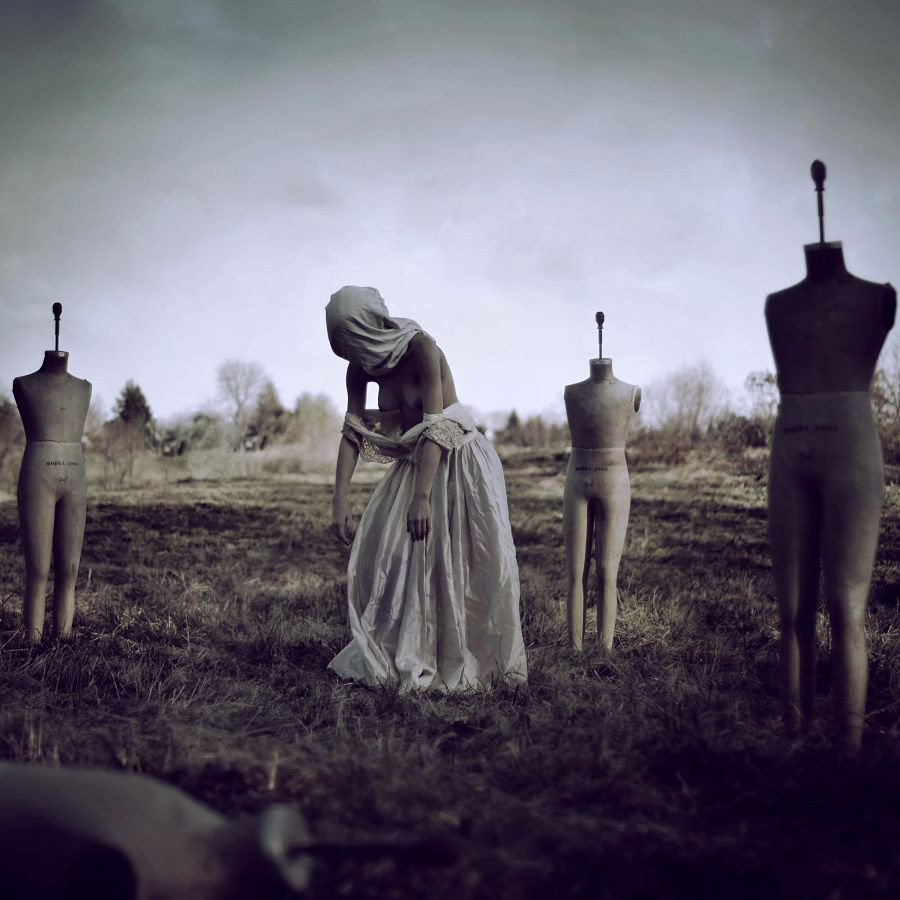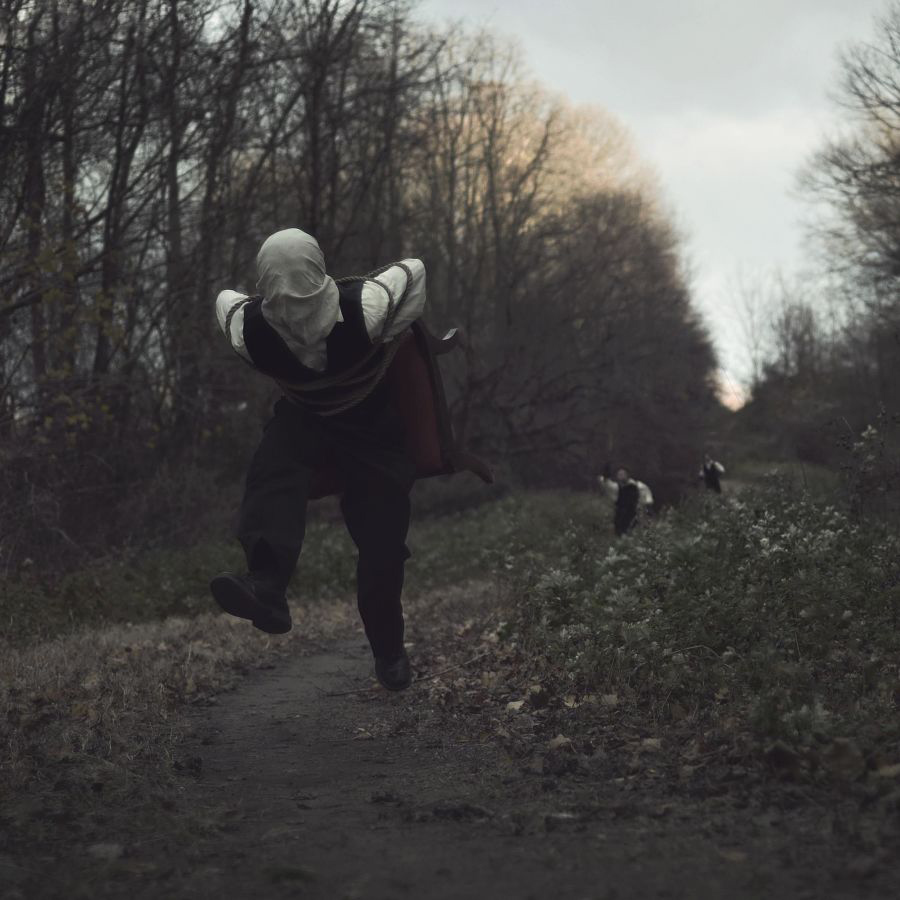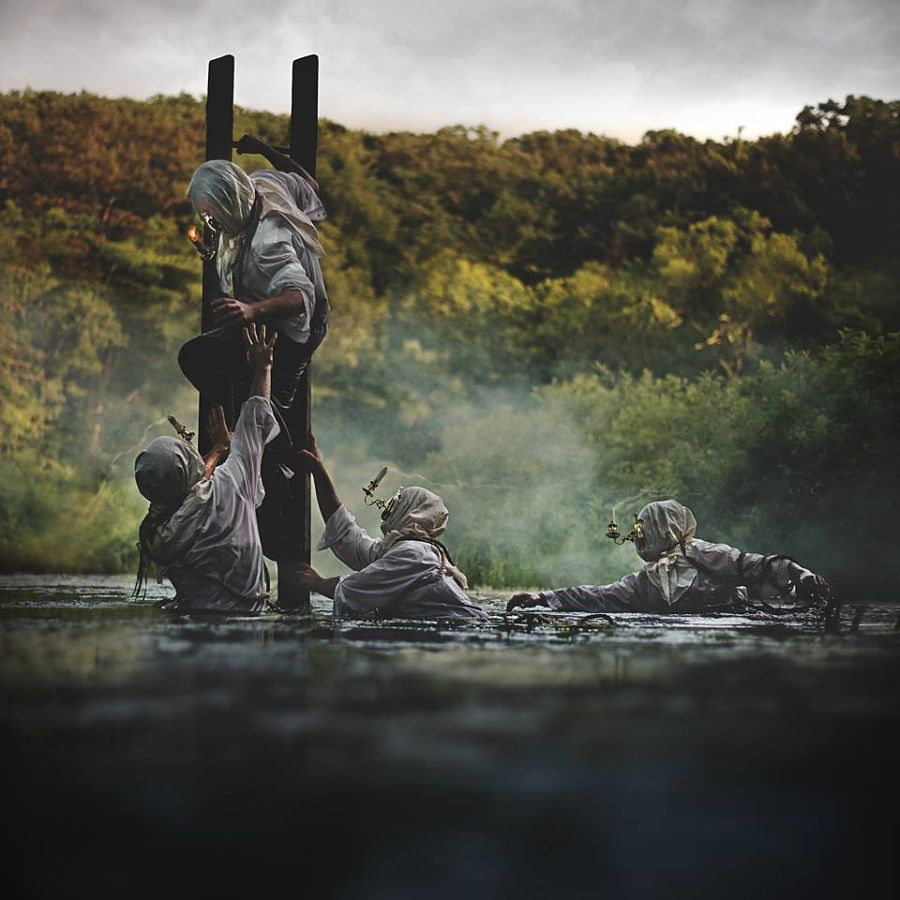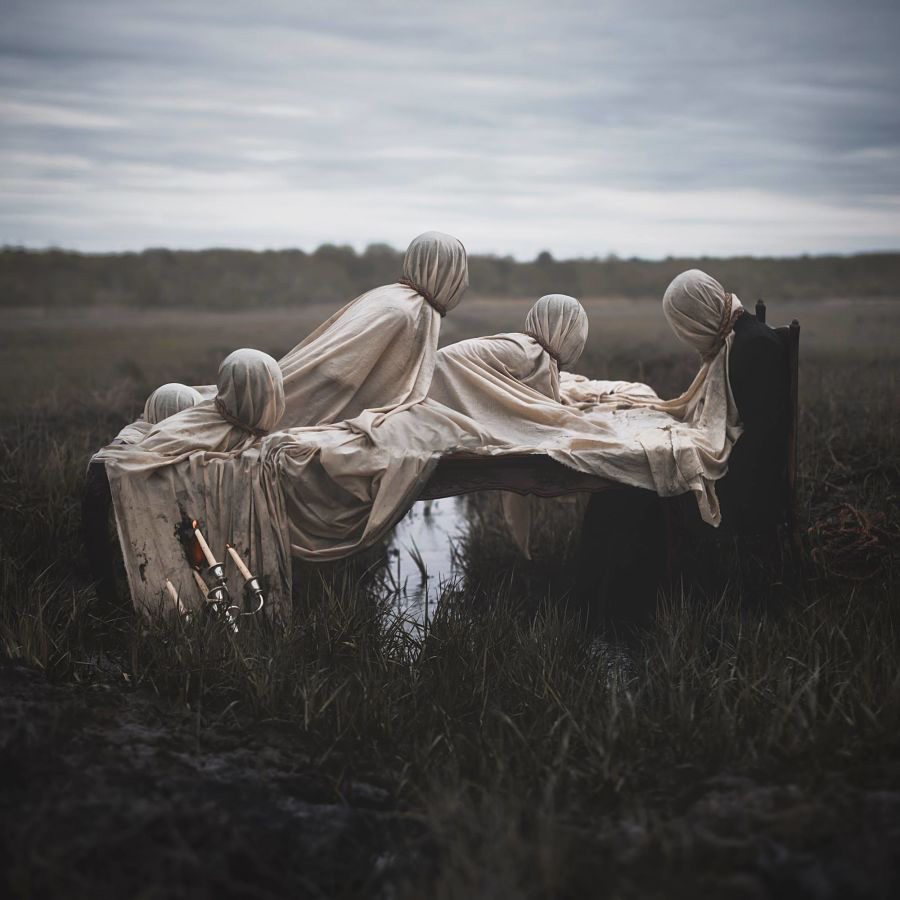Exclusive interview with Nicolas Bruno, 2nd Prize Winner, Stocksy United Photography Award, 2019 Beautiful Bizarre Art Prize
We all wish for our dreams to come true, but what becomes of our nightmares? The majority of us would wish to forget them the second we wake, shoving them to the deepest caverns of our subconscious. It isn’t a common desire to turn them into realities, but for photographer Nicolas Bruno, 2nd Prize Winner of the Stocksy United Photography Award, this is exactly what his photographs consist of. After struggling with sleep paralysis for many years, Bruno decided to harness the power of his paralytic state, which he describes as “terrifying, unworldly, and ungodly”.
Continue reading to discover the photographic world of Nicolas Bruno and how he transforms terror into beautifully surreal photographs.
To enter the 2020 Beautiful Bizarre Art Prize in any of the four Award categories: INPRNT Traditional Art Award, Yasha Young Projects Sculpture Award, ZBrush Digital Art Award or iCanvas Photography Award, and for your chance to receive global exposure for your work + share in over US$35,000 in cash and prizes, click here.
Interview with Nicolas Bruno
How does an idea start for one of your photographs?
For a fresh idea, I begin my process by analyzing my dream journal. I look through the writings and sketches that I’ve made for a basis of the new composition. After choosing from characters that I’ve seen or feelings I’ve experienced, I will roughly sketch out my image. This sketch will inform me on what props or costumes I will need to build, along with what type of location I’ll need to scout. I begin creating my props in my studio from scratch, then searching local thrift stores for the objects that I can’t make myself. I will spend a few days location scouting, constantly monitoring the weather for the perfect cloudy or foggy day. On the day of my shoot, I will load up my truck with all of my props and gear and set out to the location. Because I work by myself, it will take me a few trips to carry all of my props through the woods or marsh. I will set up my scene to match what I’ve conceptualized in my sketch.
Sleep paralysis has opened up a side of my mind that I am still beginning to understand. Being stuck between the world of sleep and consciousness offers me a perspective that is otherwise impossible to achieve.

I know sleep paralysis plays a big role in your creative process; how would you say this condition has impacted your work?
After analyzing my works from the past years, I still begin to discover themes that I’ve subconsciously woven into each composition. Sleep paralysis has opened up a side of my mind that I am still beginning to understand. Being stuck between the world of sleep and consciousness offers me a perspective that is otherwise impossible to achieve. Although each experience is fleeting, I can begin to learn more about myself each time I open my dream journal. As the years go by, I look forward to decoding more of the underlying messages in my dreams through my artwork.
How long does it take from concept to completed image?
From sketching to finishing the edit of the final photograph, my process generally takes between one to two weeks. If my concept does not rely heavily on prop creation, I may be able to create an image within two to three days. For certain images, I may have to wait multiple days just to have the right weather or height of the ocean tide. My process takes time, but to me, the extra planning and crafting makes the final product worth the wait.

How do you choose a location for your shoots? Does each location add to the meaning of each photograph?
When choosing a location, I enjoy going back to places in nature that I’ve explored as a child, mostly in my hometown of Northport, New York. These places offered me an escape and sense of wonder in my youth and continue to do so through setting the stage for my creations. The energy from these landscapes gives me a sense of comfort and belonging. The environments of marshland channels, deep woodlands and open fields all serve influence to the portrayal of my dreams.
I know you make many of the props you use in your photography. What are some of your favorite props that you have made?
My favorite part about my path as an artist is being exposed to the world of set design. I love the challenge of working with new mediums that can influence what appears in my photographs. In my travels, it has been next to impossible to find an antique wishing well to incorporate into my images. After careful planning, I decided to sculpt my own wishing well out of found materials and foam. I engineered the well so I could easily transport it to my location. I weathered it with old moss, dirt, rotting shingles and different shades of grey and brown paint. Once photographed, I was blown away from how much realism the well carried. I am looking forward to crafting more intricate props for my images.
I grew up with a fascination for shooting images on disposable cameras, along with using my mother’s film camera to take images around my yard. The excitement of getting the package of 5×7 prints back from the developer was addicting.
Have you always had an interest in this type of prop making (carpentry, sewing, etc)?
When I was growing up, I loved crafting wooden swords and shields with the neighborhood kids on my street. My mother would also make us capes and costumes out of old tablecloths. Through this fun and excitement, I found a great interest in woodworking and sewing. During college, I worked on my craftsmanship in woodworking and sewing just as much as my photography. Although I am a photographer, I take pride in working through multiple mediums to create my work.

How did you come to learn these different types of skills?
When I am intrigued by a process, I enjoy the experiment of trying to learn the skill through self teaching. For me, there is something therapeutic about challenging myself to figure out a skill on my own. When I have developed brief knowledge of the skill, I will research more through books and videos. I find importance in working in multiple mediums because it streamlines my artistic process and allows me to work independently on my projects.
I noticed that all of the titles for your photographs are Italian, does this have any significance to your work?
For me, it’s important to add a touch of my heritage to my work. As a nod to my Italian background, I translate words written in my dream journals to obtain my titles. To honor my Greek side of the family, I often use items that my great grandmother made as props, such as the woven tablecloth in my piece “Vertenza”. I like to believe that my ancestors feel celebrated in the works that I create.

Have you always had an interest in photography?
I grew up with a fascination for shooting images on disposable cameras, along with using my mother’s film camera to take images around my yard. The excitement of getting the package of 5×7 prints back from the developer was addicting. I never saw photography as a passion until my teenage years, where photography and Photoshop became my creative outlet to deal with the stress of my sleep disorder. Photography had a big impact on my childhood, and I look forward to sharing this same experience with my own children in the future.
Are there any artists (or people in general) that have inspired you creatively?
Some of my peers that I draw inspiration from are Joel Robison, Brooke Shaden, Sean Mundy and Terrence Drysdale. I mostly look at artists of the past in alternate mediums, such as John Atkinson Grimshaw, Caspar David Friedrich, and Francisco Goya. Musicians also inspire the underlying themes within my work, such as Iron & Wine, Fleet Foxes, Bon Iver, Gregory Alan Isakov, and Jesca Hoop.
What was your favorite photograph that you have created so far, and why?
One of my recent works titled “Attesa” is one that I’ve been resonating with the most. Within this piece, I’ve depicted the way I feel during a moment of sleep paralysis. The figure, laying immobile, sits directly under a 145lb blacksmith’s anvil which is tethered to a rope, slowly unwinding due to the candle burning underneath it. The water rushes under my feet and the tide begins to rise. There are many symbols within this image – the anvil; symbolizing the pressure I feel upon my chest during the dream, the rising tide; symbolizing the feeling of drowning, and the candle burning; displaying the spark of anxiety I get upon waking while immobile.

What does the Beautiful Bizarre art prize mean to you?
The Beautiful Bizarre art prize is a rare and uplifting competition for artists that venture from the norms of the art world. It has been a challenge to find a hub for artists that do not fit the stereotypical mold of contemporary art. Beautiful Bizarre showcases incredible works that express wild imagination and impeccable skill. I am thankful to be awarded within this competition, and proud of my talented peers that have also been recognized.
Why did you enter the Beautiful Bizarre Magazine Art Prize?
As an artist and art lover, I heavily identify with the mission that Beautiful Bizarre Magazine has developed and facilitates. Beautiful Bizarre lifts up artists of all skill levels creating in traditional and unconventional methods, offering us a platform to share our most wild creations. To me, my work feels at home in the art world that Beautiful Bizarre has created.

Any upcoming exhibitions or news our readers should know about?
I am currently developing works for new exhibitions, along with searching for a grant to finish the creation of my virtual reality experience. I am also gearing up to produce a tarot card deck, where I will be photographing a new composition for each card. I am hoping to release the deck by the end of 2020.
Nicolas Bruno’s Social Media Accounts
Website | Facebook | Instagram | Twitter









